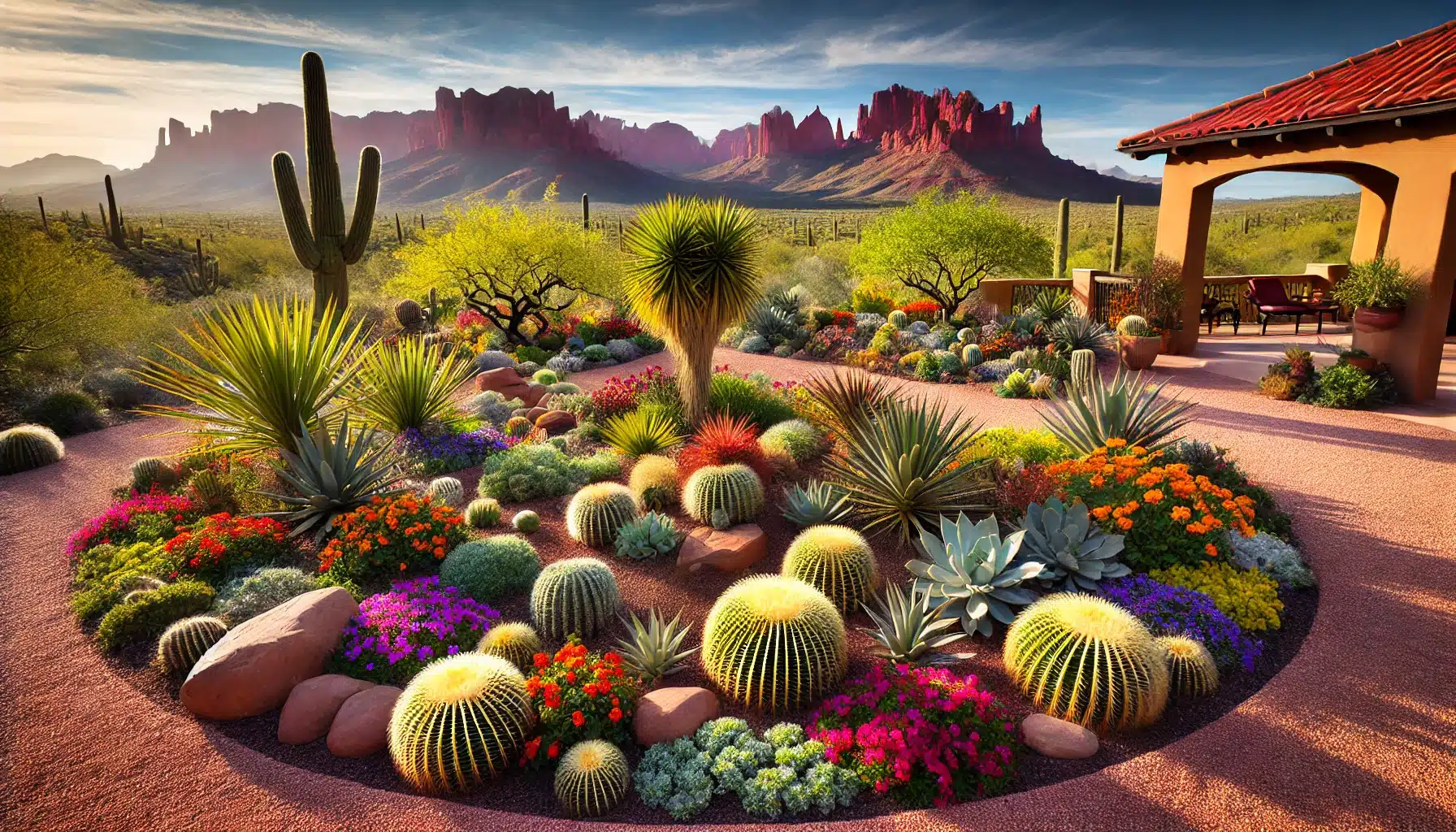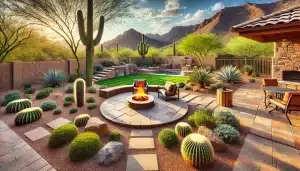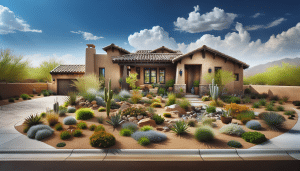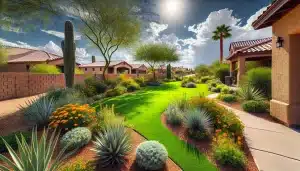Transforming your Arizona yard into a desert oasis requires creativity, planning, and the right plant selections. At Red Mountain Landscaping, we specialize in turning the arid landscapes of Arizona into stunning, sustainable gardens. This guide will provide you with innovative ideas and practical tips to help you create your perfect desert landscape.
Contents
- 1 Understanding the Arizona Climate
- 2 Choosing the Right Plants
- 3 Designing Your Desert Landscape
- 4 Xeriscaping: Water-Efficient Landscaping
- 5 Incorporating Desert Wildlife
- 6 Practical Tips for Maintaining Your Desert Landscape
- 7 Enhancing Your Outdoor Living Space
- 8 Budget-Friendly Landscaping Ideas
- 9 Conclusion
Understanding the Arizona Climate
Before diving into landscaping ideas, it’s essential to understand the unique climate of Arizona. The state is known for its hot, arid climate, with intense sunlight and minimal rainfall. This environment presents both challenges and opportunities for landscaping.
Key Climate Features:
- High Temperatures: Summer temperatures can soar above 100°F.
- Low Precipitation: Annual rainfall is typically less than 10 inches.
- Diverse Soil Types: From sandy to clayey soils, the ground composition varies.
Choosing the Right Plants
Selecting the right plants is crucial for a thriving desert landscape. Native plants and drought-tolerant species are ideal as they are well-adapted to the harsh conditions and require less water.
Top Plant Choices:
- Cacti and Succulents: Barrel cactus, agave, and aloe vera.
- Desert Flowers: Desert marigold, penstemon, and verbena.
- Shrubs and Trees: Creosote bush, mesquite tree, and palo verde.
Designing Your Desert Landscape
Creating a visually appealing and functional landscape involves a blend of hardscaping and softscaping elements. Here are some design ideas to consider:
Hardscaping Elements
Hardscaping refers to the non-plant features of your garden, such as rocks, paths, and structures. These elements provide structure and enhance the aesthetic appeal of your landscape.
- Rock Gardens: Use a variety of rocks and pebbles to create visual interest and natural drainage.
- Pathways: Stone or gravel paths can guide visitors through your garden and reduce soil erosion.
- Water Features: Incorporate water-saving features like a small fountain or birdbath to attract wildlife.
Softscaping Elements
Softscaping involves the living components of your garden, including plants and soil. Combining different textures and colors can create a vibrant, dynamic landscape.
- Layering Plants: Arrange plants in layers, from ground cover to shrubs to trees, to create depth.
- Color Schemes: Use a mix of colorful flowers and green foliage to brighten your garden.
- Edible Plants: Consider adding edible plants like prickly pear cactus or desert herbs for a functional twist.
Xeriscaping: Water-Efficient Landscaping
Xeriscaping is a landscaping philosophy focused on water conservation. It’s particularly suited for Arizona’s desert environment.
Principles of Xeriscaping:
- Planning and Design: Create a detailed plan considering sun exposure, water needs, and plant placement.
- Soil Improvement: Amend soil with organic matter to improve water retention.
- Efficient Irrigation: Install drip irrigation systems to minimize water waste.
- Mulching: Use mulch to reduce evaporation and keep the soil cool.
- Maintenance: Regularly prune and weed to maintain plant health and appearance.
Incorporating Desert Wildlife
A well-designed desert landscape can attract a variety of wildlife, from birds to butterflies. Here’s how to make your garden a haven for local fauna:
Wildlife-Friendly Features:
- Native Plants: Provide food and shelter for local wildlife.
- Water Sources: Small ponds or birdbaths can attract birds and other animals.
- Shelter: Create hiding spots with dense shrubs or rock piles for small creatures.
Practical Tips for Maintaining Your Desert Landscape
Maintaining a desert landscape involves different practices compared to traditional gardens. Here are some tips to keep your yard looking its best:
Maintenance Checklist:
- Watering: Water plants deeply but infrequently to encourage deep root growth.
- Pruning: Trim dead or overgrown branches to promote healthy growth.
- Pest Control: Monitor for pests and use eco-friendly methods to manage them.
- Soil Health: Test soil periodically and amend as needed to maintain fertility.
Enhancing Your Outdoor Living Space
Your desert landscape can extend beyond plants and rocks to create an inviting outdoor living space. Consider adding features that make your yard a comfortable and enjoyable place to relax.
Outdoor Living Ideas:
- Seating Areas: Add benches or patio furniture for relaxation spots.
- Shade Structures: Install pergolas or shade sails to protect against the sun.
- Fire Pits: A fire pit can provide warmth and ambiance during cooler evenings.
Budget-Friendly Landscaping Ideas
Creating a beautiful desert landscape doesn’t have to break the bank. Here are some cost-effective ideas to consider:
Affordable Options:
- Reuse Materials: Utilize recycled materials for pathways and garden beds.
- Seed Propagation: Grow plants from seeds rather than purchasing mature plants.
- Community Resources: Participate in plant swaps or visit local nurseries for discounts.
Conclusion
Transforming your Arizona yard into a desert oasis is a rewarding project that enhances your home’s curb appeal and supports the local ecosystem. With the right plants, design elements, and maintenance practices, you can create a beautiful and sustainable landscape that thrives in the harsh desert climate.
At Red Mountain Landscaping, we are dedicated to helping you achieve your landscaping dreams. Request a Free Quote today and let us bring your vision to life!




